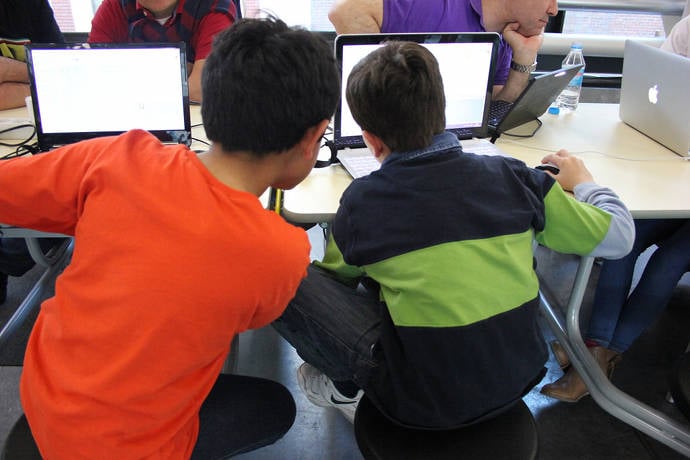Which programming language should you learn or teach in class? There are hundreds of choices. If you are a teacher or a young student not in college, the best options might be programming languages designed for younger kids and classrooms. While the most obvious are Scratch and Alice, there are many other options to look at before you choose a language.
There also are programming languages tied to robots. The simplest is KIBO where kids ages 4-7 can press blocks into the robot to make it move and do things. The Move the Turtle iPhone and iPad application lets kids put together simple instructions to make a turtle do things.
The best choice of language depends on you. Kids probably should pick based on what looks fun and interesting to them. Teachers and parents might choose based on which language offers lots of support, tutorials, and projects to complete in the classroom or at home.
Here are a few languages to consider with a link to a Software Programming Languages for Education resources page created and maintained for this magazine.
Alice
Created and supported by Carnegie Mellon University in Pittsburgh, Pennsylvania, Alice is a software program used to create animations. You put bubbles (blocks) in a specific order then customize the blocks to display images and perform actions.
Codea
This iPad application makes it easy for kids 10 or older to learn basic game programming with the Lua language. The application includes a number of games and extensive help available from within the application. Kids can point and click the code to change colors, copy code from a reference library or other application, and perform different tasks.
Kodu
Microsoft has developed this language primarily to make it easy for groups and schools to host one day hackathons with kids creating small applications in a day.
Move the Turtle
This iPhone and iPad application makes it easy and fun for kids to learn basic programming concepts. You create a series of steps for the turtle to follow to complete tasks, then modify each step as needed.
Scratch
Like Alice, Scratch is the creation of a university, MIT. It also uses bubbles (blocks) instead of traditional code. Individual bubbles are organized to make the software perform actions. Each bubble can be customized and defined.
Tynker
Tynker is from a Silicon Valley software company which takes the best of Scratch and similar bubble languages then offers schools and groups projects.
Learn More
Software Programming Languages for Education
https://kidscodecs.com/resources/programming/education/
http://en.wikipedia.org/wiki/Educational_programming_language
Alice
http://www.alice.org
https://kidscodecs.com/alice-tutorials/
Codea
http://codea.io/
https://kidscodecs.com/codea-tutorials/
Kodu
http://research.microsoft.com/en-us/projects/kodu/
Move the Turtle
http://movetheturtle.com/
https://itunes.apple.com/us/app/move-turtle.-programming-for/id509013878?ls=1&mt=8
Scratch
http://scratch.mit.edu/
http://scratched.media.mit.edu/
https://code.google.com/p/scratch-unplugged/
http://www.simonhaughton.co.uk/2013/02/scratch-20-resources-and-planning.html
Tynker
http://www.tynker.com/
https://itunes.apple.com/us/app/tynker-learn-programming-visual/id805869467

